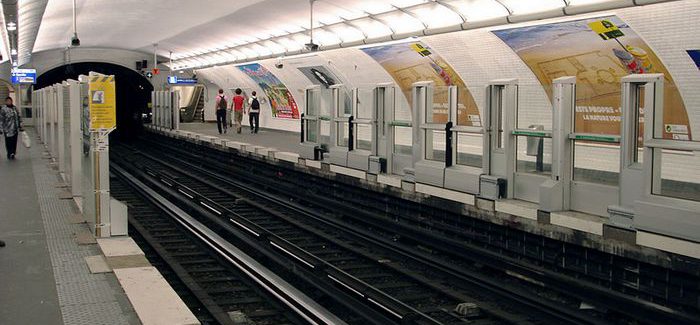
One of the oldest metro of the world, the mythic Parisian first line is now equipped with Platform Screen Doors (PSD). Created in 1900, the most famous metro of Paris lives a true revolution. Indeed, the present-day line includes both automatic trains (52) and PSDs in 26 stations. The main line of Paris has became safer, strike-proof and the very quality of the transport has been upgraded by the change of the rolling stock. However, this is only the ostentatious part of this renewal. The most interesting part for us is the hidden side of the routine of the passing trains at a station… the opening and closing of Platform Screen Doors. As an iceberg which moves the way it does, only because of its invisible part, the PSDs are controlled by a discreet and far more predictable and safer system…
The keystone of critical safety
This Platform Screen Doors Control/Command System (PSDCS) is SIL3. It means that the probability of the doors opening without a train, or with a bad placed one, is inferior to 10-7 (0.000001) per hour. According to the IEC 61508, it is the second safest accreditation in railway-systems behind SIL4 which is not relevant here. The efficiency of the system is based on a simple process. A train enters a station; doing this, it rolls over a kind of narrow black carpet (on the way, at the middle of the station, between the rails). There is also an on-board transmitter in the middle of the train. If the train stops at the right place, the transmitter will be above the carpet and will form a magnetic loop between the train and the ground (the platform). This magnetic-loop enables the communications between the train and the platform and thus, the orders of opening/closing the PSDs to be transmitted from the train to the platform. This is a fail-safe system.
This PSD Control System called DOF1 (like a dolphin in French) is nothing but the paragon of a technology, the Formal B Method – a language which enables its users to translate specifications into a formal dialect(one word, one meaning) which is automatically analyzed to determine if contradictions exist between those specs. This method can be used to design bug-less software or very safe systems.
CLEARSY, the know-how to combine availability and dependability.
CLEARSY, the company which succeeded in designing the PSDC system is a French corporation specialized in safety critical engineering and the world leader in the use of the Formal B Method. Its department dedicated to railways includes two other PSDC systems, visible in Paris 13th line and Sao Polo 2nd and 3rd line. CLEARSY also created various safety systems from axels-counter to gap-fillers.